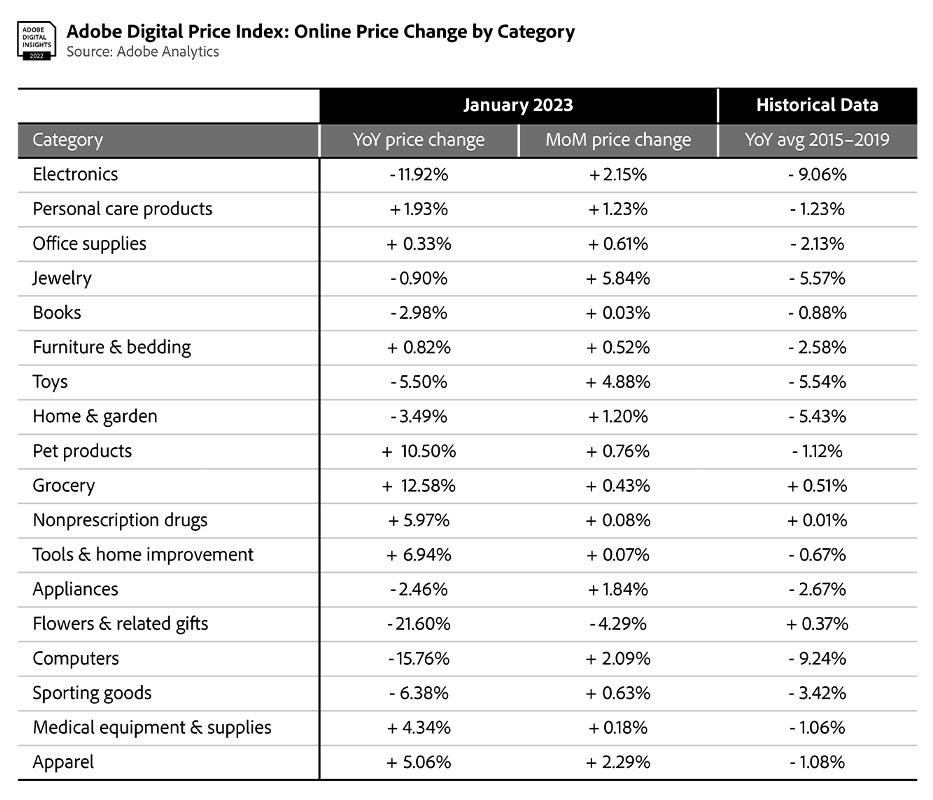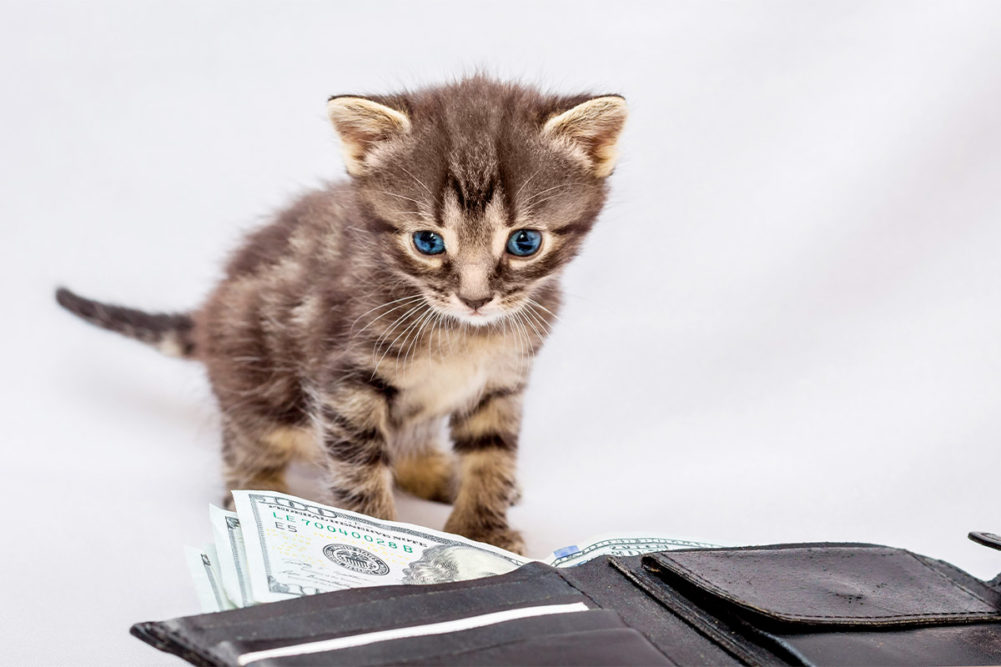WASHINGTON and SAN JOSE, CALIF. — Adobe Analytics described “persistent inflation” for pet products, groceries and tools in its Digital Price Index for January, and this inflation has also run rampant in the brick-and-mortar space.
Online pet product prices were up 10.5% year-over-year in January, according to the Adobe Analytics Digital Price Index. Taking a broader retail perspective, the US Bureau of Labor Statistics clocked the growth of pet product prices at 11.9% year-over year in January. From December 2022 to January 2023, online prices for pet products rose 0.76%, while overall retail prices of pet products were up 0.2%.
For pet food specifically, overall retail prices were up 15.1% year-over-year in January, and 0.2% from December 2022 to January 2023, according to the US Bureau of Labor Statistics.
“The rising cost of living has made consumers more cautious about discretionary spending, with $72.2 billion spent online in January, a modest increase of 1.7% year-over-year,” said Patrick Brown, vice president of growth marketing and insights at Adobe. “…As shoppers become more selective in where they spend their money, e-commerce will be an important battleground this year as brands seek to retain customers and drive experience-led growth.”

Overall, online prices of pet products and grocery items have grown the most since January 2022, with grocery prices up 12.58% year-over-year, according to the Adobe Digital Price Index.
In the American Pet Product Association’s latest Pulse Study report, roughly 90% of pet owners surveyed reported they have been greatly or somewhat impacted by increased food and grocery prices. Heightened gas prices have also affected US pet owners, with approximately 86% of pet owners having been greatly or somewhat impacted. However, this impact has leveled off since June 2022 as gas prices have declined.
In December 2022, 50% of pet owners reported spending significantly more on pet food than they did one year ago. Nearly 40% said they would switch to a less expensive product or brand if the price of their regular pet food increased, and 32% said they “view pet treats as discretionary and plan to curtail purchases to save money.”
However, APPA’s report makes it clear that pet owners are largely unwilling to spend less on pet food, seeing it as a nondiscretionary purchase. In December 2022, 66% of pet owners agreed with the statement, “My pet’s diet is very important to me, so I do not plan to make any changes to it regardless of the economy/my finances.”
Stay up to date on the latest pet food processing industry headlines on our News page.




